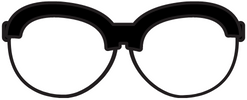Guides & How To, Pocket 101
How To Measure Your Pupillary Distance
Have you ever been shopping for eyeglasses online and come across the term PD, or pupillary distance, but have no idea what it means or how to measure it? Fear not, measuring your PD is actually quite simple and can be done right at home.
PD is the distance between the centers of your pupils and is a crucial measurement for making sure your eyeglasses fit perfectly. Having the correct PD ensures that your eyes are correctly centered in the lenses, which helps you see clearly and comfortably.
Here’s a step-by-step guide on how to measure your PD at home:
Materials you’ll need:
- A ruler with millimeter markings
- A mirror
- A friend or family member (optional, but it can make the process easier)
Steps:
- Stand about arm’s length away from the mirror and hold the ruler against your forehead. Make sure the ruler is horizontal and centered over the bridge of your nose.
- Close your right eye and align the ruler’s zero mark with the center of your left pupil. Look straight ahead at the mirror.
- Without moving your head, close your left eye and open your right eye. Take note of the measurement in millimeters that lines up with the center of your right pupil on the ruler.
- Repeat the process a few times to ensure accuracy, and take the average of your measurements to get your PD.
If you’re having trouble measuring your PD on your own, you can always ask a friend or family member for help. They can hold the ruler in place while you look straight ahead, or they can measure your PD for you.
It’s important to note that your PD may be slightly different for near and far vision, so it’s best to take separate measurements for each. Additionally, if you have a high prescription, it’s best to have an optician or eye doctor measure your PD for you to ensure accuracy.
For adults, the average pupillary distance is typically between 54-68 millimeters (mm). However, the range can vary from 50-78 mm. The average male has a PD of around 64 mm, while the average female has a PD of around 62 mm.
For children, the average pupillary distance is generally smaller than in adults, and it can vary according to age. Here are some general guidelines:
- Infants (0-12 months): 41-55 mm
- Toddlers (1-3 years): 43-49 mm
- Preschoolers (3-5 years): 45-52 mm
- School-age children (6-13 years): 48-54 mm
Keep in mind that these are just general guidelines, and the actual range for each individual can vary.
Now that you know how to measure your PD, you can confidently shop for eyeglasses online and ensure the perfect fit for your eyes. Don’t forget to double-check your measurements and, if in doubt, seek the help of a professional.






















Where Vision Values Your Wallet